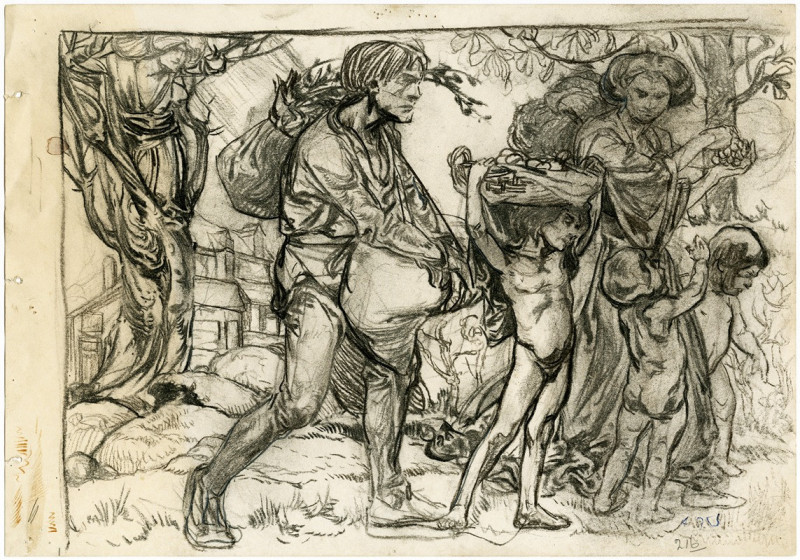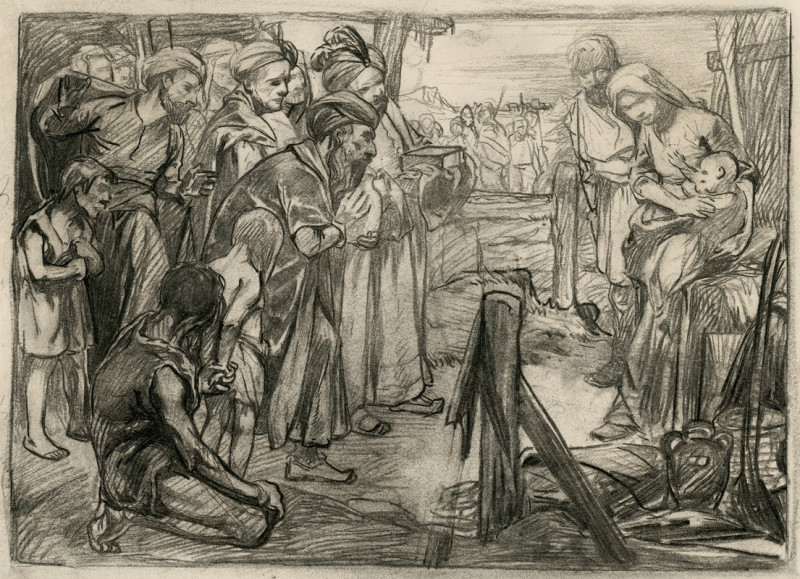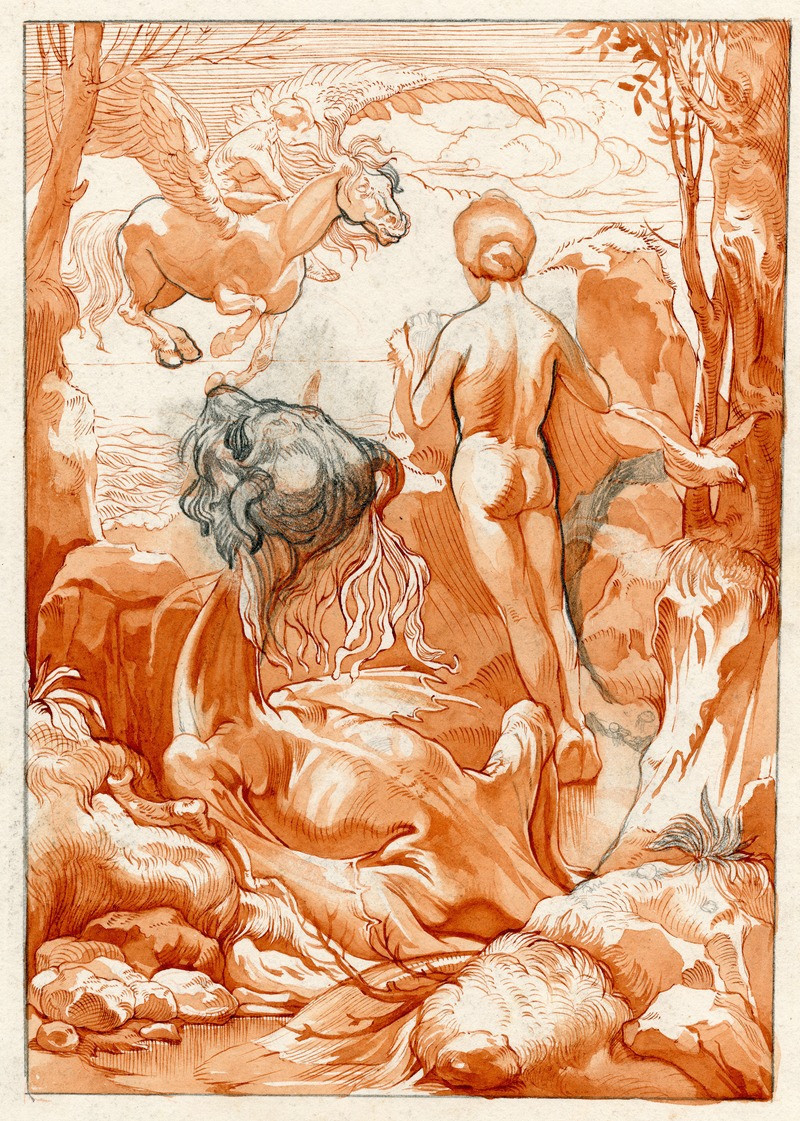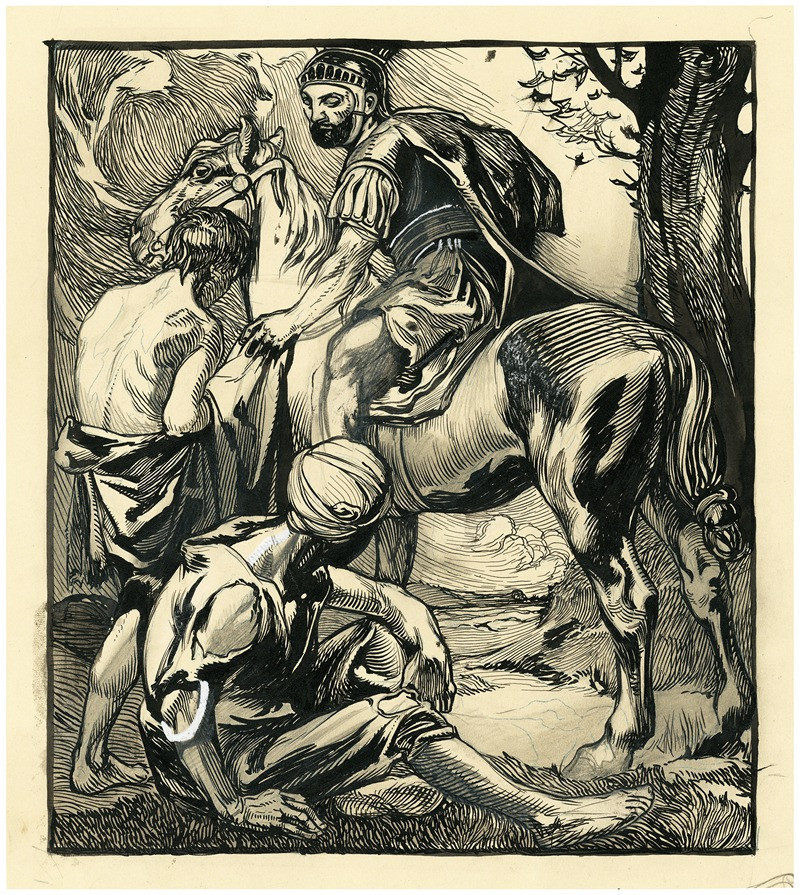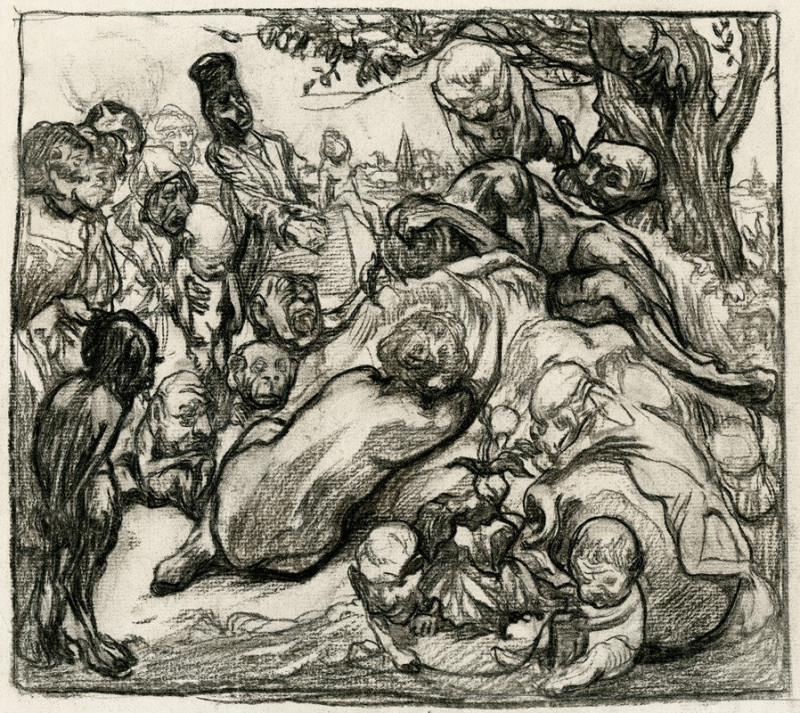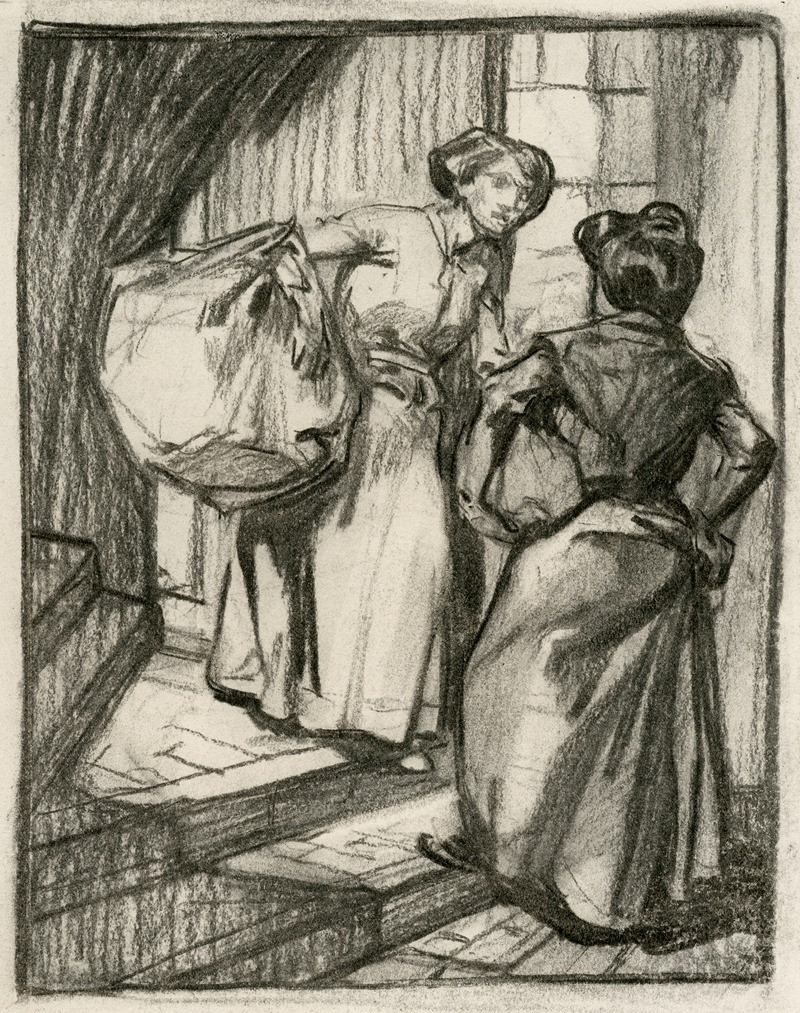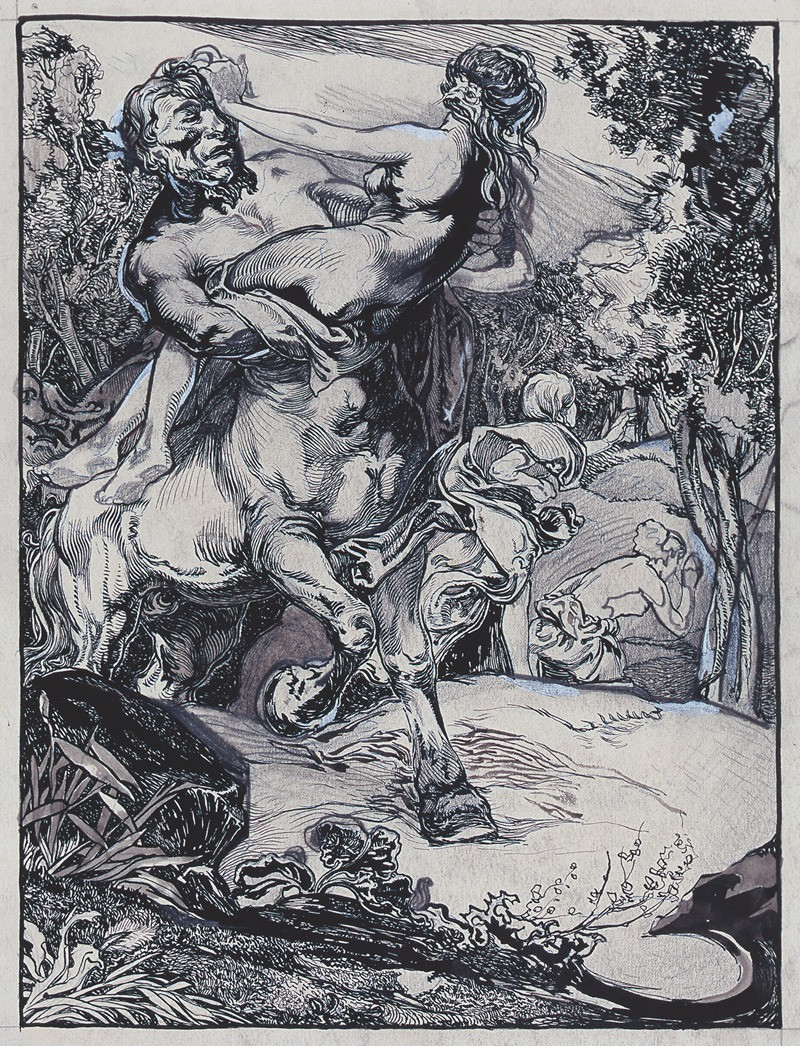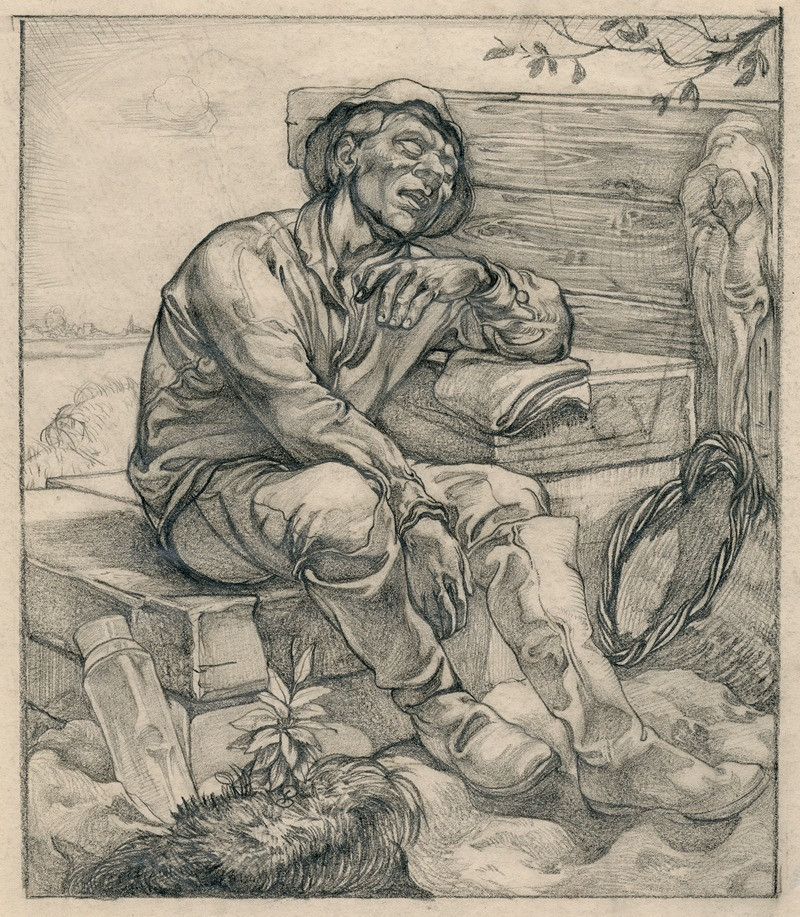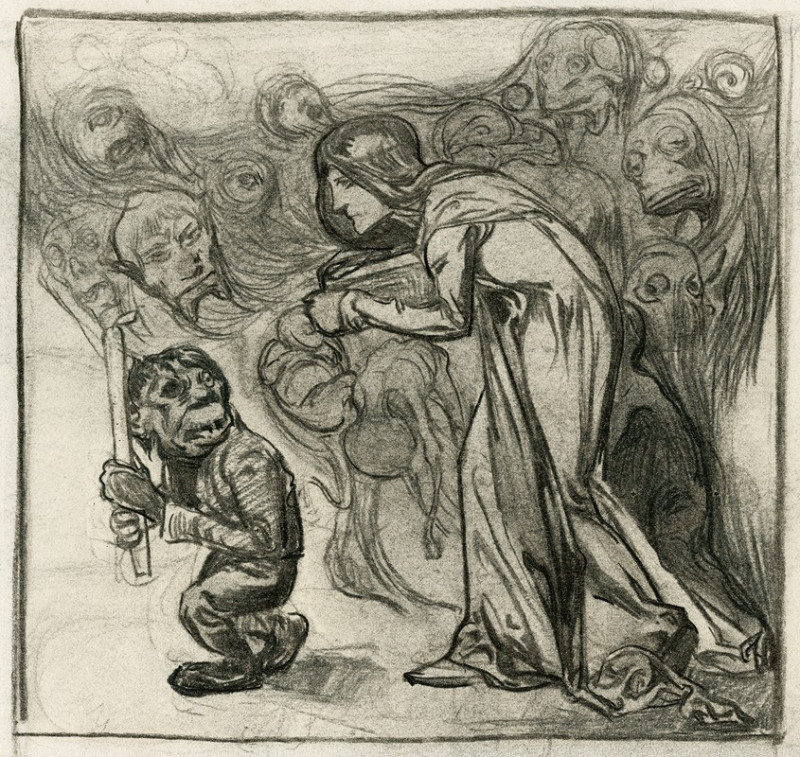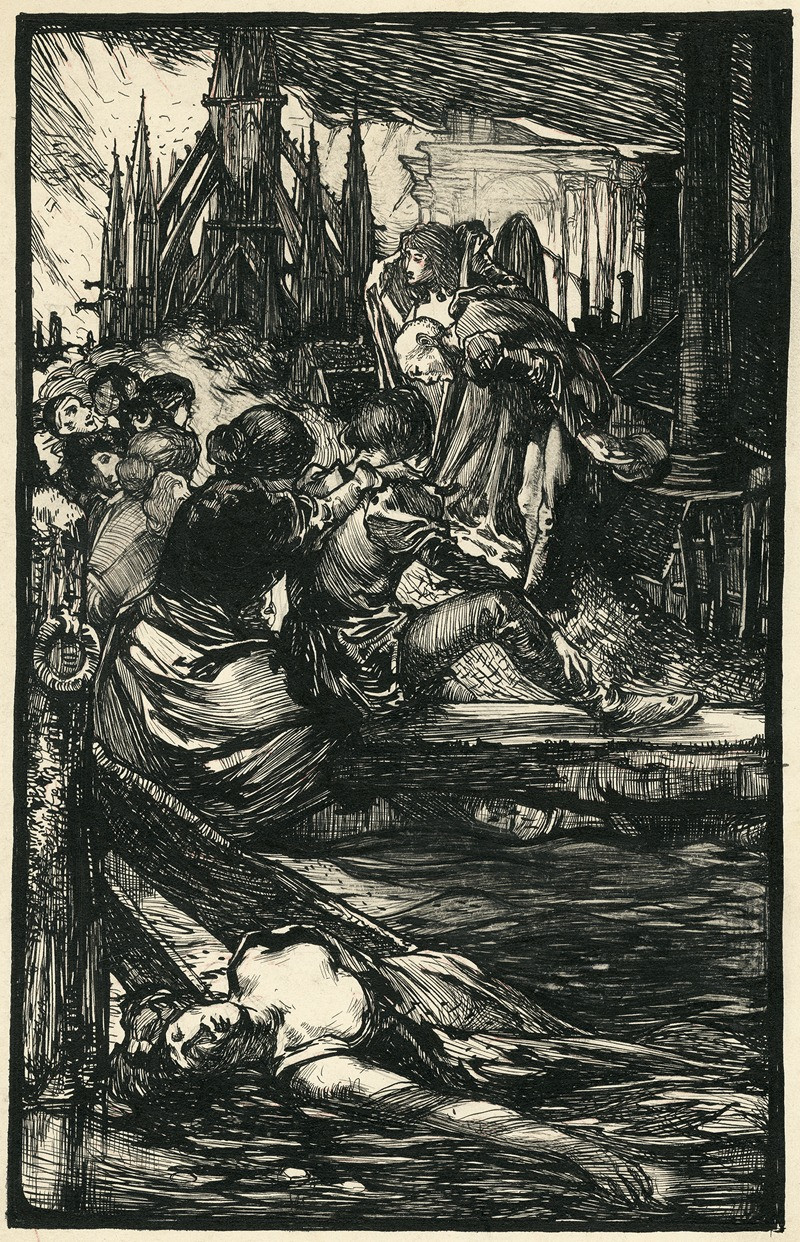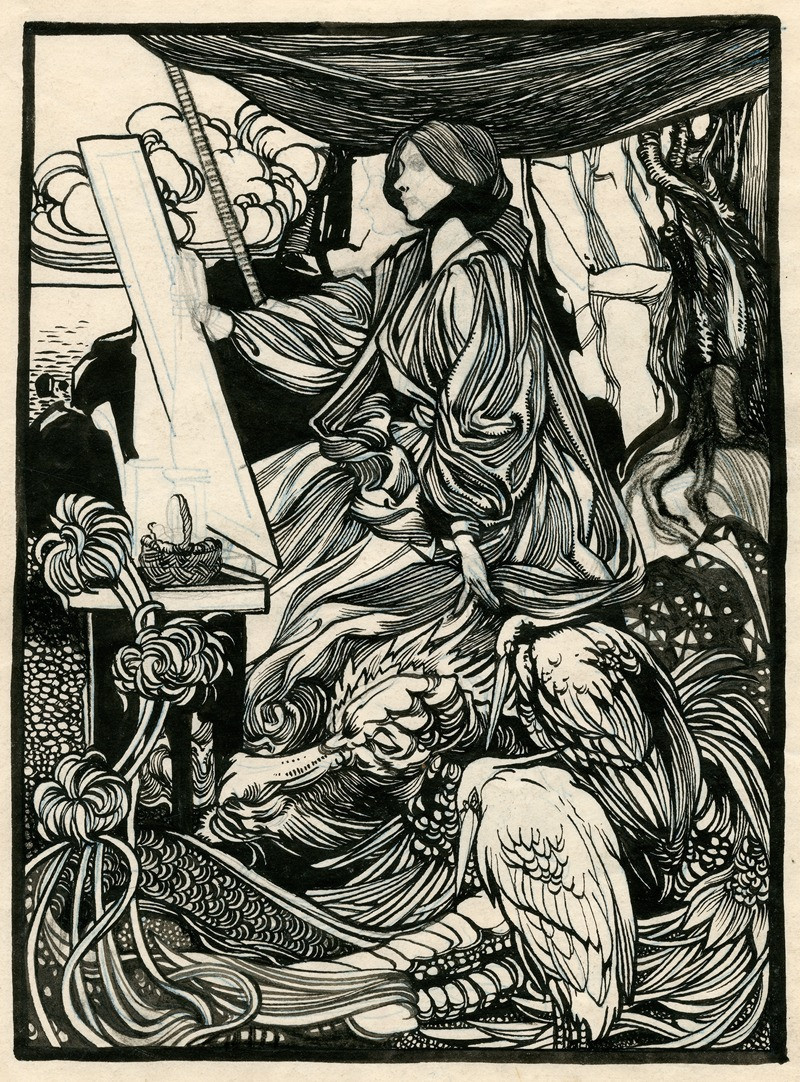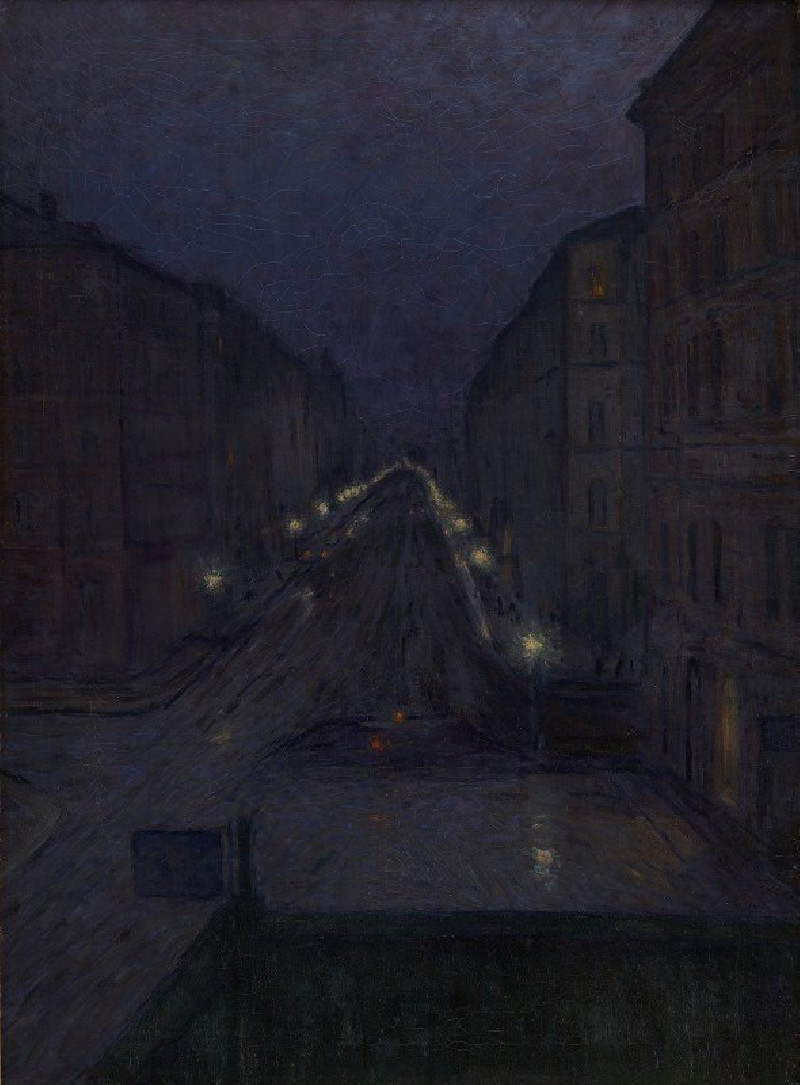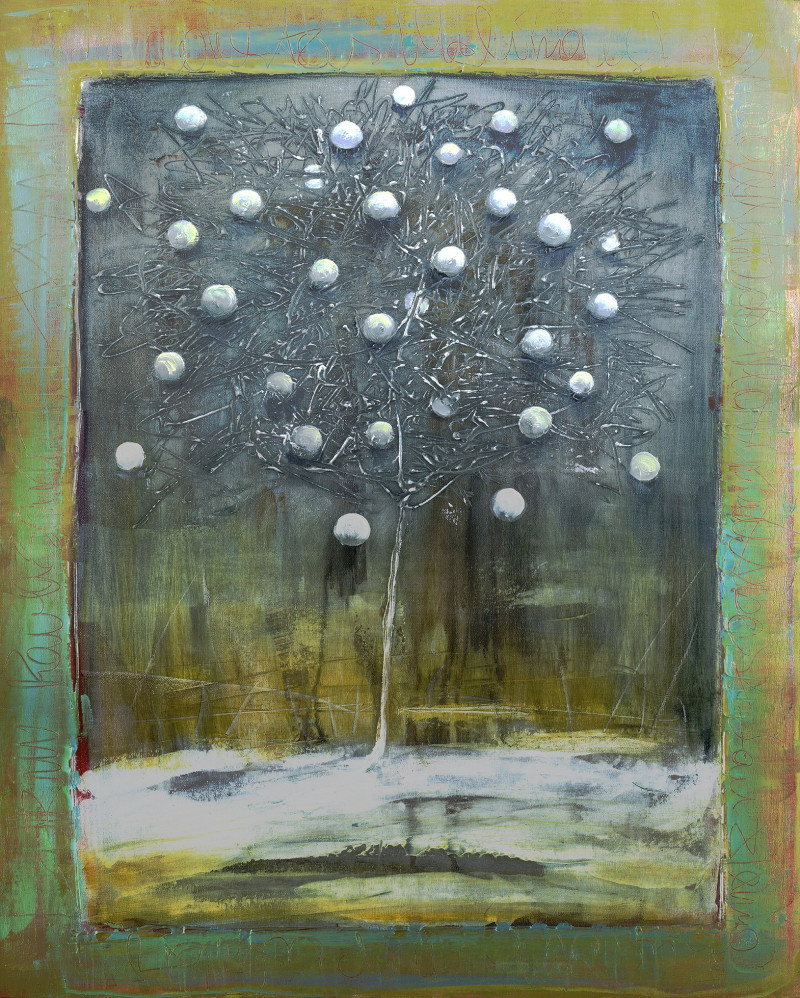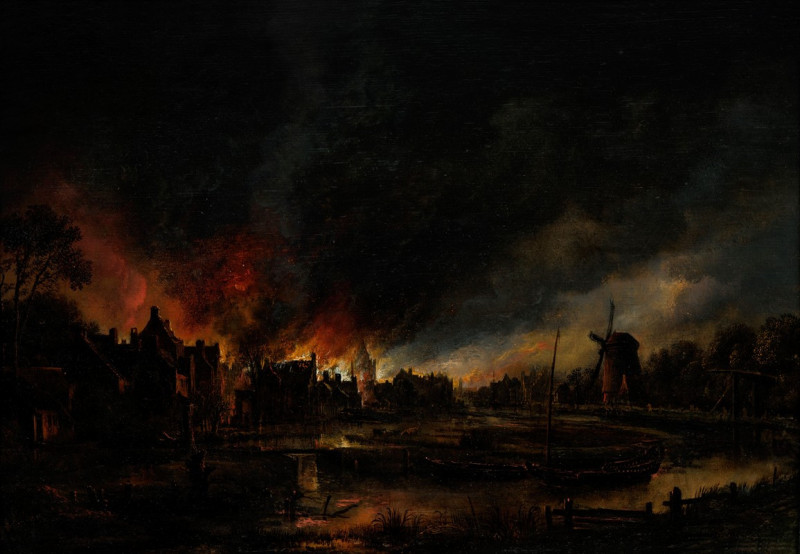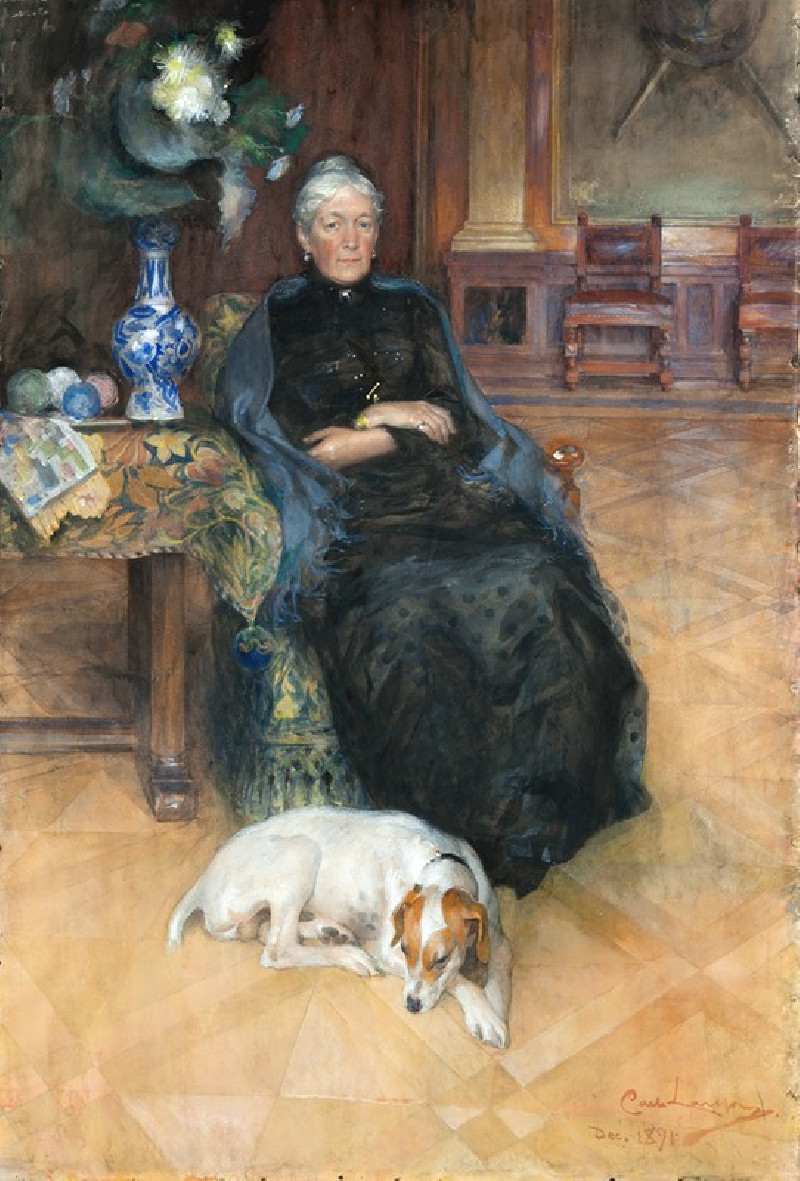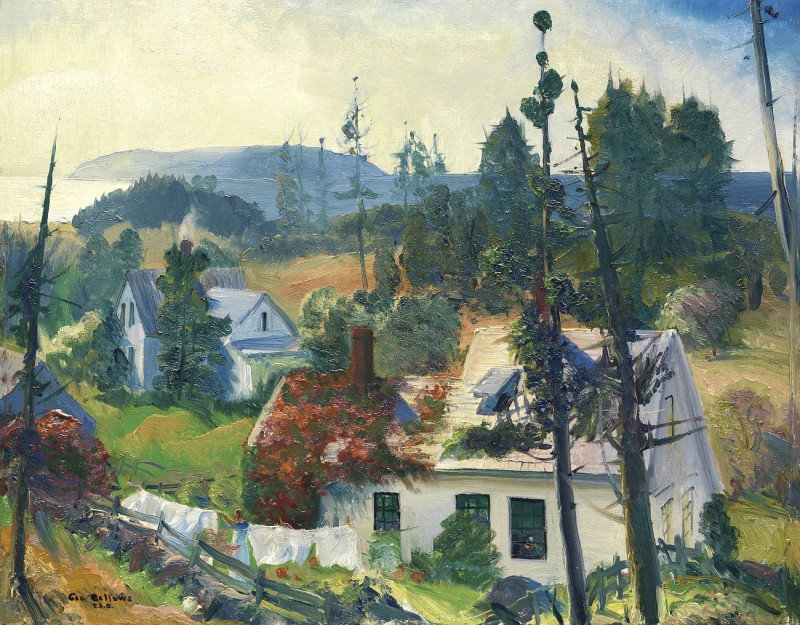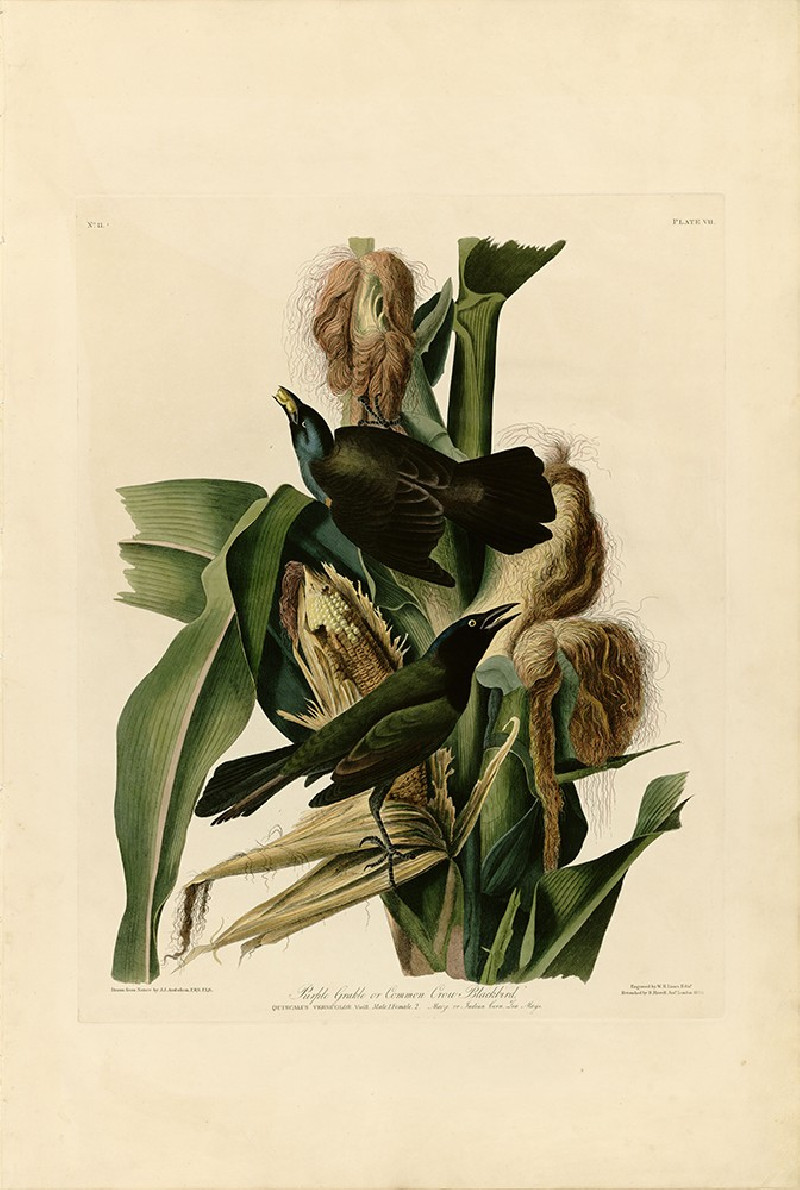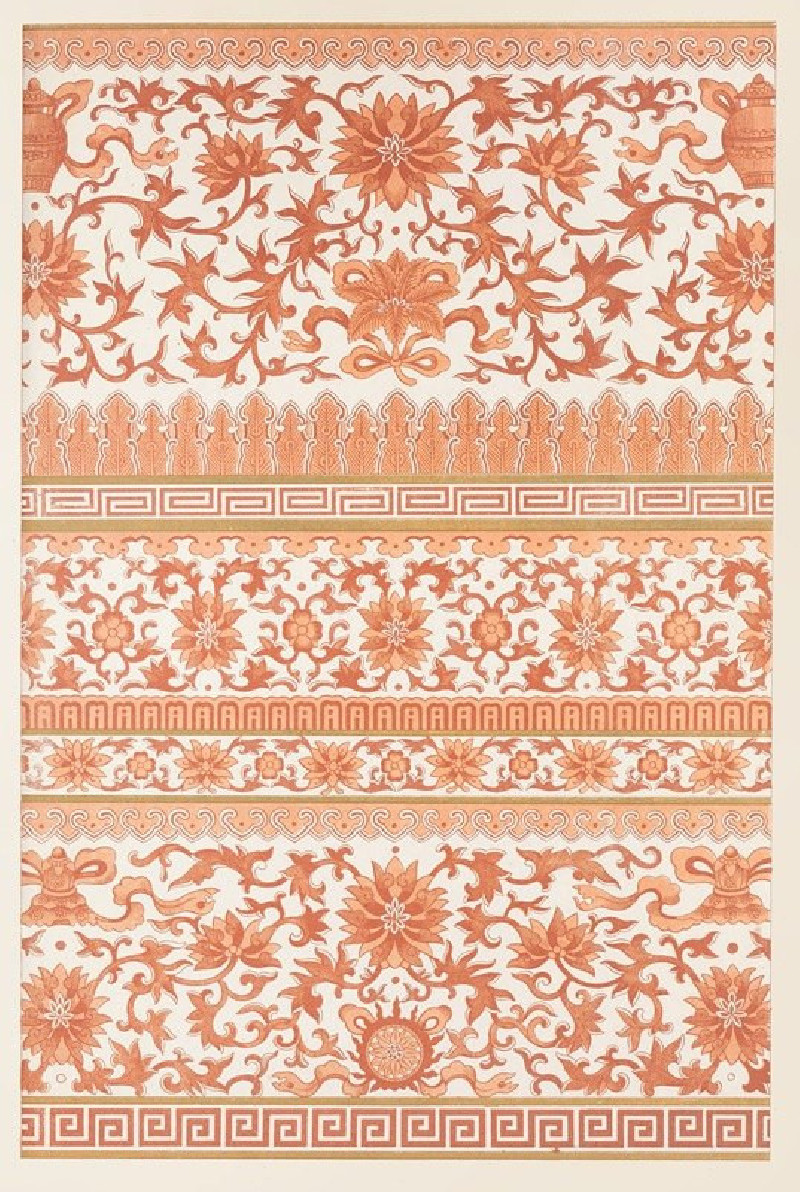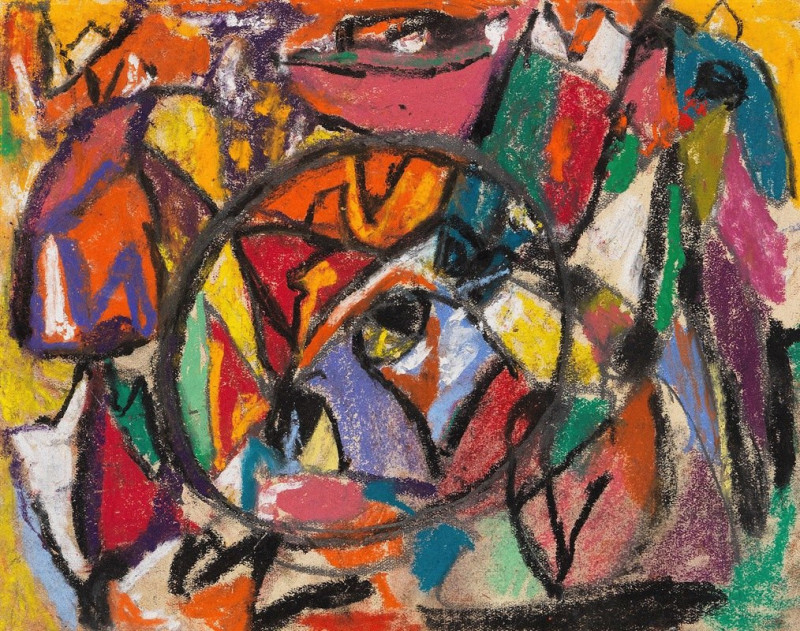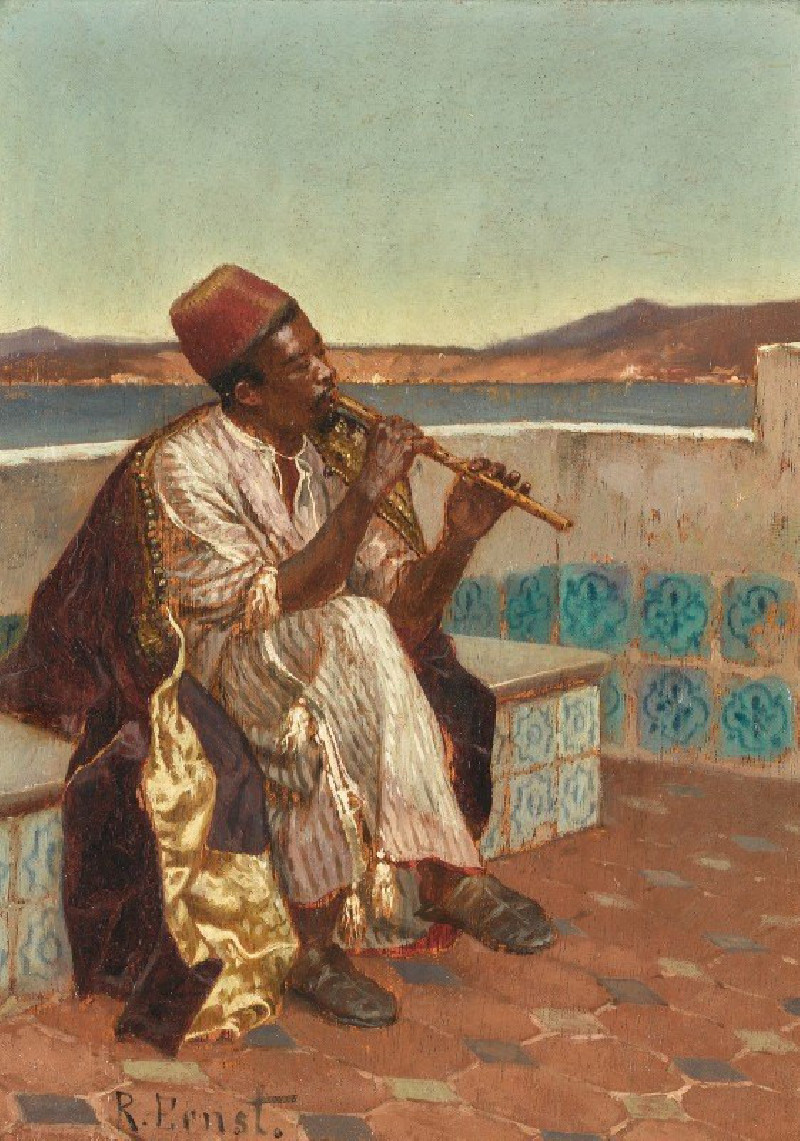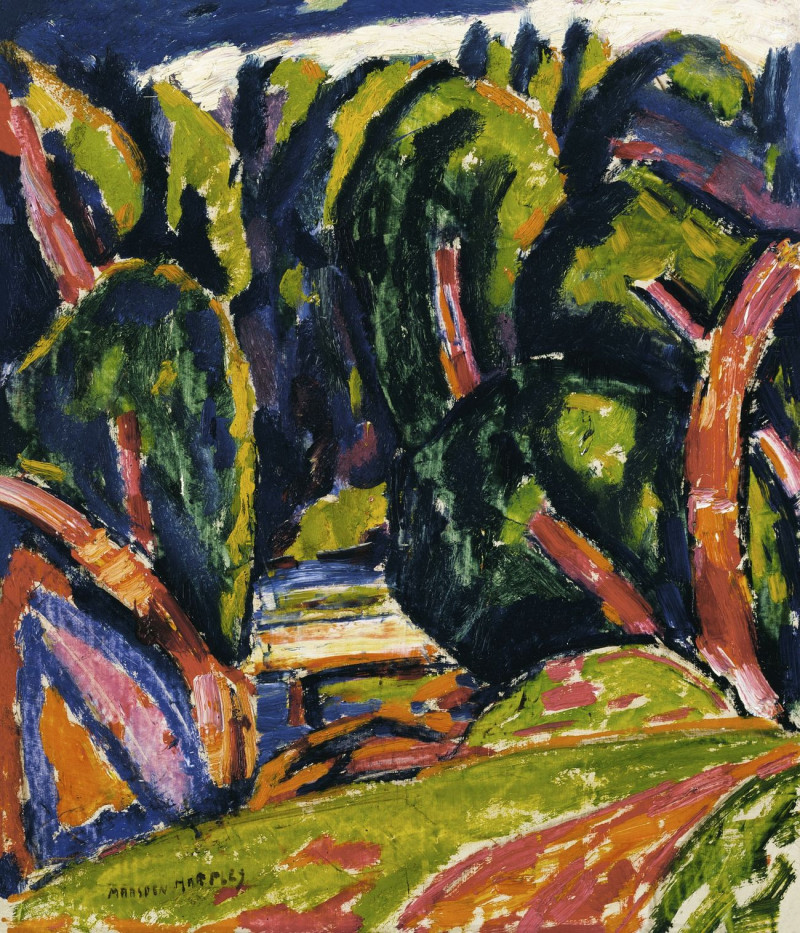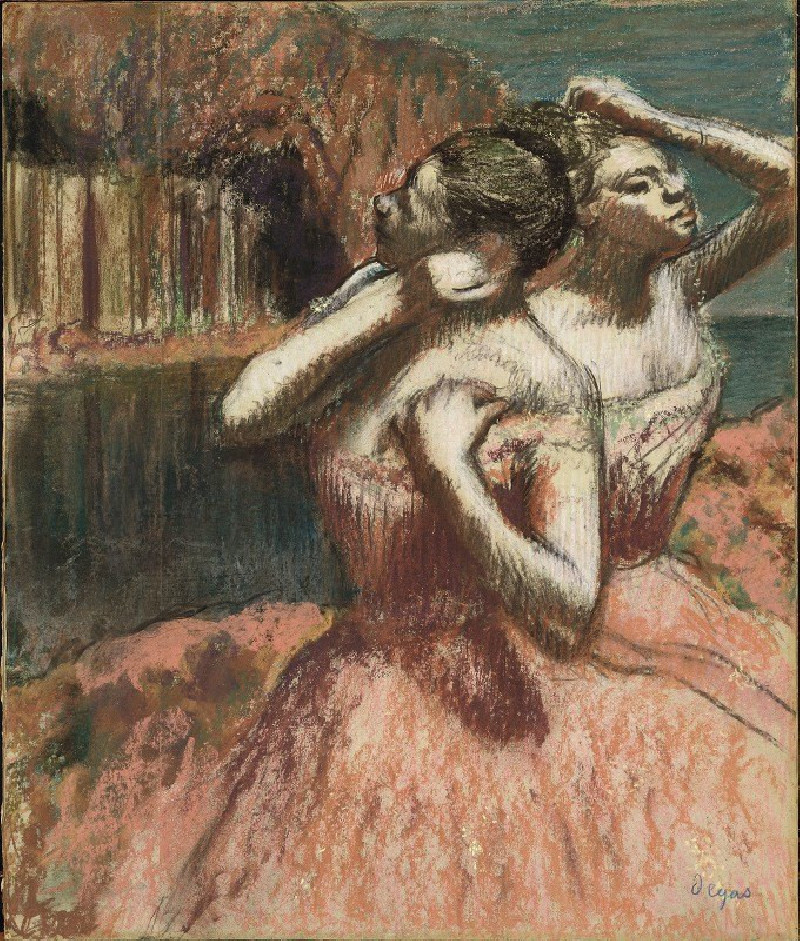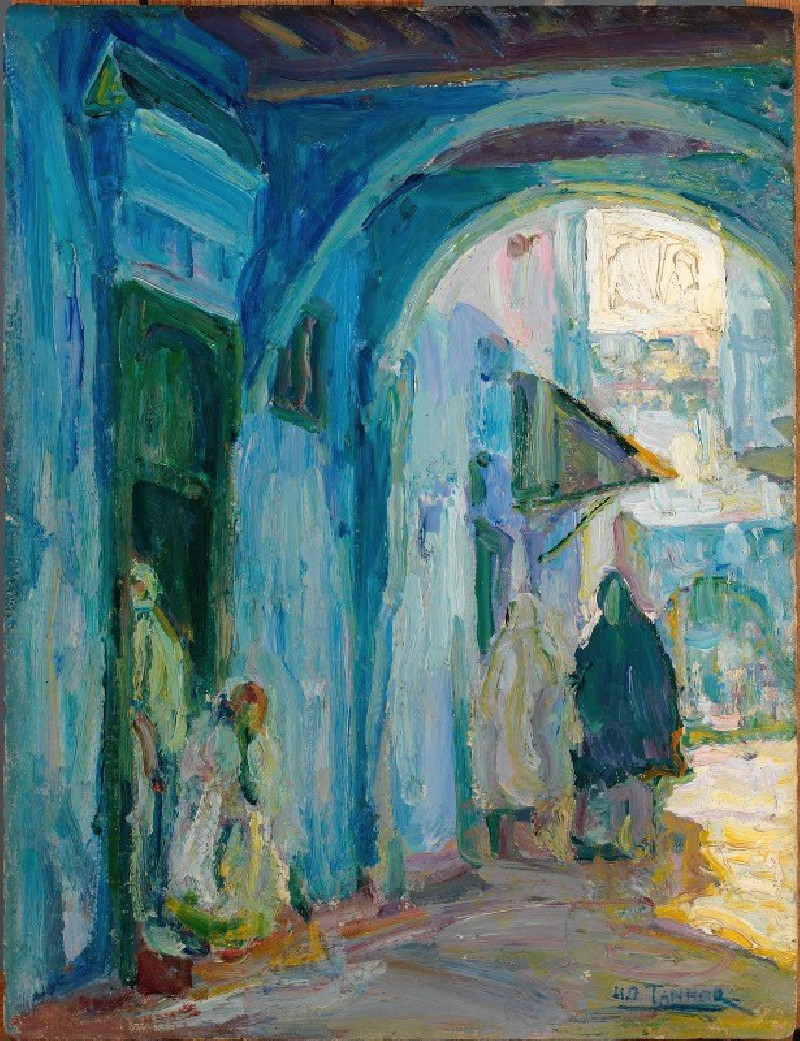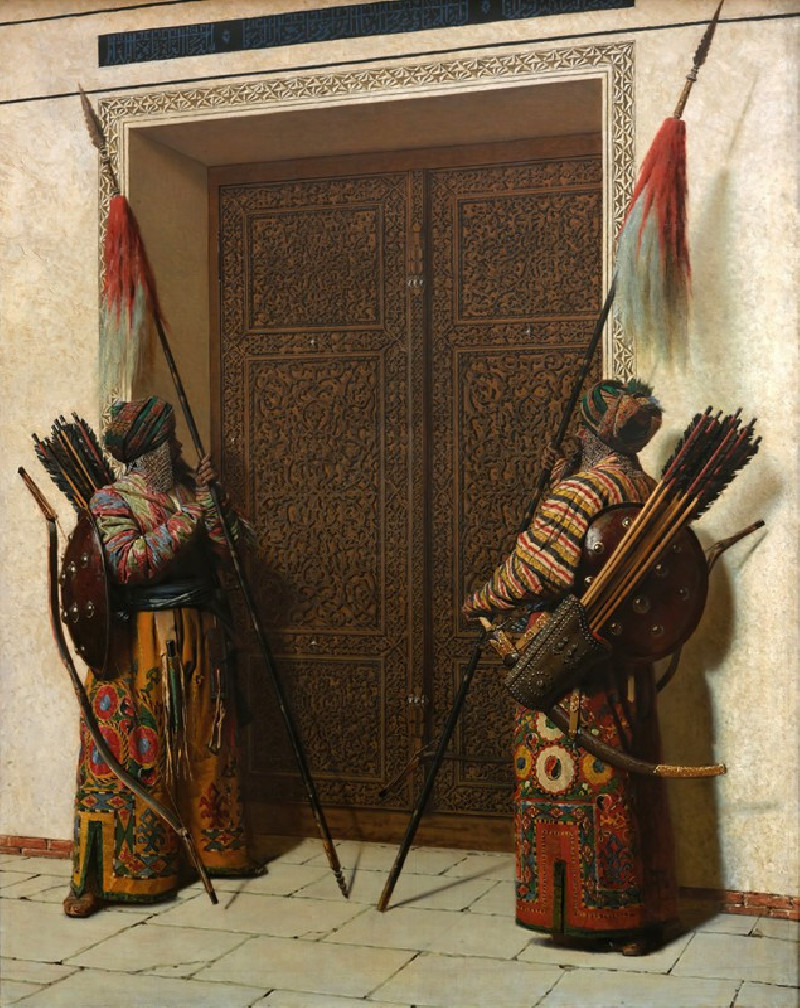Man, vrouw en 3 kinderen met vruchten
Technique: Giclée quality print
Recommended by our customers
More about this artwork
Enter the rustic and pastoral world of Johannes Josephus Aarts, a master of portraying simple, everyday moments with profound artistic eloquence. This particular sketch, titled "Man, vrouw en 3 kinderen met vruchten" (Man, Woman and 3 Children with Fruits), invites viewers into an intimate family scene enveloped by nature's abundance.The composition captures a man, distinguishably weary yet resilient, as he stands leaning on a walking stick, his other hand holding a sack slung over his shoulder. Beside him, a woman gracefully balances a large basket on her head, filled with the day's harvest of fruits, her poise echoing the enduring spirit of maternal fortitude. Accompanying them are three children, each interacting playfully: one reaches towards the basket, another stands by attentively, and the third, in a jubilant pose, perhaps dances or helps gather more fruits.The background is a picturesque blend of village life and nature: rustic houses peeking through lush trees and ample foliage, suggesting a setting that is both serene and alive with day-to-day activities.Aarts' skillful use of pencil creates a dynamic range of textures from the roughness of the tree bark to the softness of the children's hair, bringing a tactile quality that invites the viewer to not just see, but feel the scene. His understanding of human anatomy and emotion radiates through each figure’s posture and expression, narrating a tale of familial unity and labor in harmony with nature.
Delivery
Returns
Johannes Josephus Aarts was a Dutch painter, illustrator, lithographer, engraver, etcher, writer, academic teacher and director, lecturer, sculptor and book-cover designer.
Jan Aarts received training in the Royal Academy of Art, The Hague. He was active there until 1911, and in Amsterdam from 1911 to 1934. Initially, until around 1900, Aarts worked above all on engravings. Thereafter he began to also use other graphic methods. In his work, one found depictions of farmworkers, dyke workers and later also tramps, beggars and invalids. Between 1920 and 1930 he produced mostly visionary work with apocalyptic scenes.

